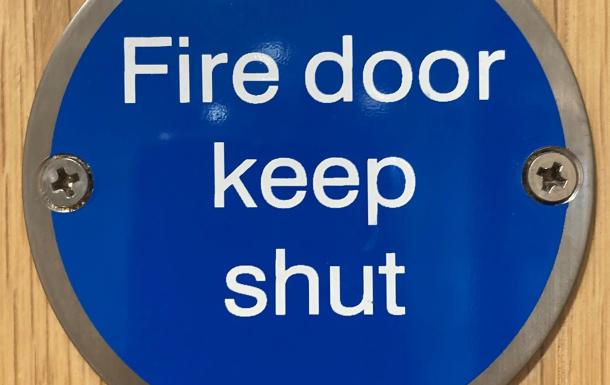8 July 2022
Fire safety laws to keep you safe
Fire safety laws to keep you safe

The Government has recently updated fire safety legislation to make sure people who live in flats are protected as much as possible from the risk of fire.
YHN, along with Newcastle City Council who own your building, are responsible for making sure we follow the new laws so your building is as safe as it can be.
What do the laws cover?
The Fire Safety Act 2021 was introduced in May 2022 and clarifies that if a building contains two or more sets of domestic premises the legislation covers:
-
the building’s structure and external walls (including windows, balconies, cladding, insulation and fixings) and any common parts
-
all doors between domestic premises and common parts, such as flat entrance doors (or any other relevant door).
The Fire Safety (England) Regulations 2022 include specific building safety requirements depending on the height of the building and are expected to come into force in January 2023.
Why is the law changing?
Following the devastating Grenfell Tower Fire in 2017, the Grenfell Tower Inquiry was established. To meet the Inquiry’s Phase 1 recommendations, the Fire Safety (England) Regulations 2022 (the Regulations) were introduced.
What do the Fire Safety (England) Regulations 2022 require responsible persons to do?
If you live in a block of flats managed by us, YHN and Newcastle City Council are classed as the ‘responsible persons’ for your building and must plan for the new regulations coming into force in January 2023. This includes providing you with:
-
Fire safety instructions so you know how to report a fire and what you should do if a fire starts.
-
Fire door information so you understand the importance of fire doors in fire safety.
For the buildings we manage over 11 metres high, we must also carry out:
-
Regular fire door checks: we must undertake best endeavours to carry out annual checks of the door to your flat and quarterly checks of all fire doors in the shared parts of your building.
For the buildings we manage over 18 metres or seven storeys high, the laws apply to:
-
Building plans and secure information boxes: we must provide the local Fire and Rescue Service with up-to-date building floor plans and ensure a hard copy of these plans, alongside a single page building plan which identifies key firefighting equipment, is held in a secure information box on site so they can be accessed in an emergency.
-
External wall systems: we must provide the local Fire and Rescue Service with information about the design and materials used in the building’s external wall system and tell them if anything about these walls changes. We must also provide information about the level of risk that the external wall structure carries and explain any steps taken to mitigate this risk.
-
Lifts and other key fire-fighting equipment: we must carry out monthly checks of the evacuation lifts and the lifts that are intended for use by firefighters in an emergency along with checking the functionality of other key pieces of firefighting equipment. The legislation also states that any defective lift or equipment should be reported to the Fire and Rescue Service as soon as possible if the fault can’t be fixed within 24 hours and that residents should be kept informed of any checks carried out.
-
Wayfinding signage: we must ensure the signs in your building that identify flat and floor numbers are visible in low light or smoky conditions.
What are we doing now?
We have already started work to make sure we are prepared for the new laws coming into effect in 2023. We’re working closely with Newcastle City Council and the Tyne and Wear Fire and Rescue Service to make sure we have all the right measures and processes in place to comply with the legislation and keep our customers safe.
We’re also providing training and information to our staff so they are familiar with the Fire Safety Act 2021, and the Fire Safety (England) Regulations 2022 and their implications.
When will the changes take effect?
The Fire Safety Act 2021 came into effect on 16 May 2022 and we have already reviewed the necessary fire risk assessments to make sure we comply with this new law and will use the fire risk assessment prioritisation tool to take this work forward when the Government makes this available.
We expect the other changes, including the requirements to provide additional information to the local Fire and Rescue Service, will come in force on 23 January 2023 and that the Government will publish guidance about what this will mean in practice in summer 2022.
Where can I find out more information?
The Fire Safety Act 2021 and The Fire Safety (England) Regulations 2022 can be found on the UK Government website.
The Home Office has produced a series of fact sheets, which provide more detailed information on what the changes mean in England, which are available on the UK Government website.
You can also watch the short film below from the HSE to learn more about safety cases.
We will also provide updates on our website about the work we’re doing to keep your buildings safe or you can contact us at any time with any queries or concerns:
-
0191 278 8600
Building safety cases